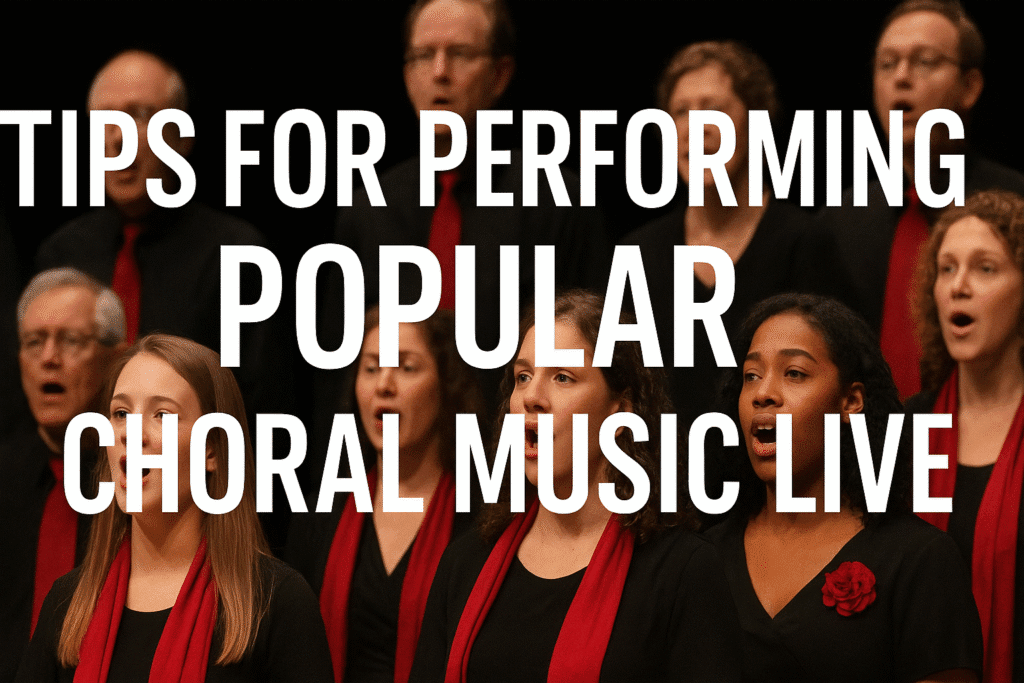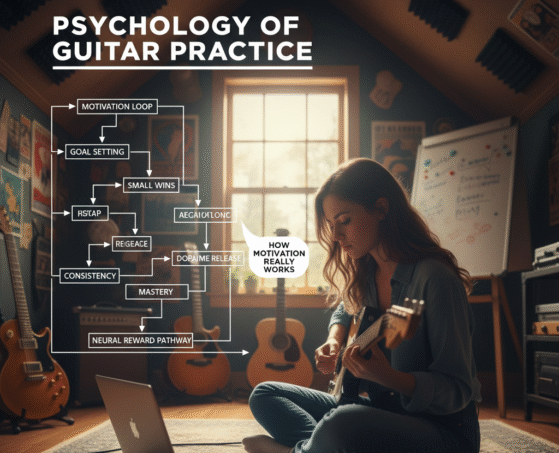Tips for Performing Popular Choral Music Live
Performing popular choral music live brings together the energy of contemporary music and the precision of choral harmony. Unlike classical choral repertoire, popular choral arrangements require singers to embrace modern vocal tone, rhythmic accuracy, and expressive phrasing—while still blending beautifully as an ensemble.
Whether your choir is preparing for a concert, competition, festival, church event, or community gathering, mastering the style of performing popular choral music will ensure that your live performance feels polished, modern, and emotionally powerful.
1. Understanding the Style Before | Performing Popular Choral Music
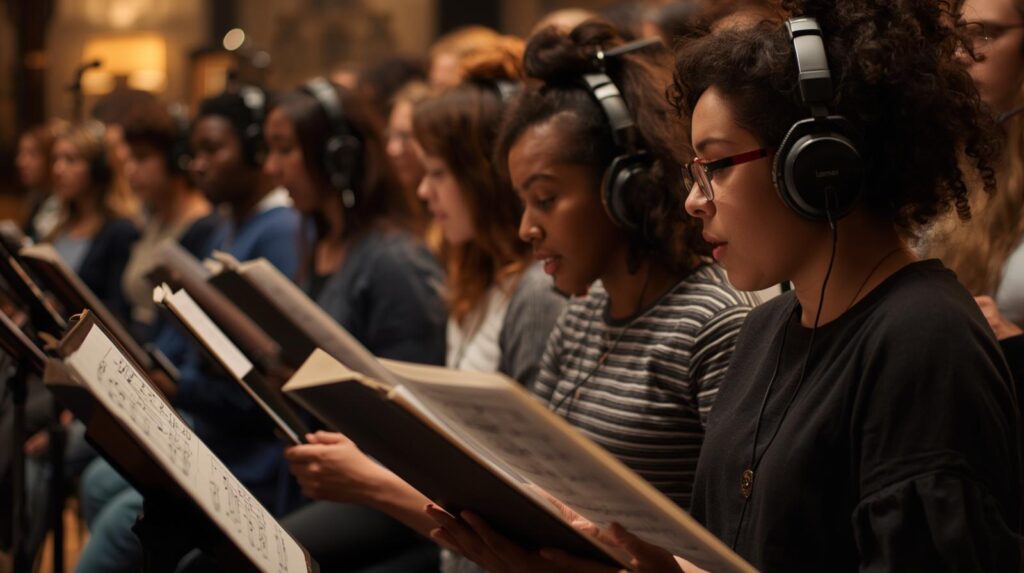
Before singers step onto the stage, they must understand what makes popular choral music distinct from classical or traditional repertoire. Popular choral music draws heavily from modern genres—pop, R&B, rock, hip-hop, soul, and musical theatre—each carrying its own vocal identity and rhythmic feel. This requires the choir to shift from a rounded, blended classical tone to a brighter, more conversational vocal approach that mirrors contemporary singing. Rhythmic precision becomes essential, as popular songs rely on groove, syncopation, and pulse-driven patterns that must feel natural and steady. Additionally, emotional interpretation is at the heart of pop music. Lyrics explore personal stories of love, empowerment, joy, and struggle, which means singers must internalize the meaning and perform with authenticity. Popular choral arrangements also often include featured soloists and call-and-response lines, requiring the ensemble to adapt dynamically around the lead voice. When choirs understand and embrace these stylistic qualities, they can perform popular choral music live with confidence, clarity, and emotional impact.
A. Contemporary Influences
Popular choral music draws inspiration from:
Each style requires a different vocal tone, rhythmic attitude, and emotional delivery.
B. Characteristics of the Popular Choral Sound
Key features include:
Forward, speech-like tone
Clean, straight-tone harmonies
Crisp diction
Minimal vibrato
Rhythmic precision
Dynamic expressiveness
C. Emotional Focus in Popular Choral Music
Pop music is storytelling.
Your singers must feel the lyrics, not just sing them.
D. Soloists in Popular Choral Music
Most arrangements include:
Featured soloists
Small-group lines
Call-and-response elements
Knowing where the lead voice sits helps shape the choir’s balance and blending.
2. Warm-Ups Designed for Performing Popular Choral Music Live

Effective warm-ups prepare the voice not only for singing, but for the specific demands of contemporary styles. When performing popular choral music, warm-ups must target breath control, tone placement, vocal agility, and rhythm. Breath exercises such as long sustained hisses and pulsed airflow patterns help develop the stability needed for pop phrasing and dynamic shifts. Tone placement work—using forward, bright sounds like “nya-nya” and speech-based vocalizations—encourages singers to find the clear, resonant, straight-tone quality essential for modern music. Because rhythm is a core characteristic of pop music, rhythm-based warm-ups like syncopated claps, offbeat exercises, and rhythmic syllable patterns help singers internalize the groove. Finally, exercises that focus on smooth register transitions and mix voice strength allow singers to handle the vocal range and stylistic demands of pop, from soft head-voice lines to powerful chest-voice phrases. With the right warm-up routine, choirs build the technical foundation needed for a polished live performance.
A. Breath Support for Pop Vocals
Prepare with:
Hissing exercises
Pulse breathing
Diaphragm activation drills
B. Tone Placement Exercises
Use forward, bright placement:
“Nya-nya-nya”
Short “Hey!” calls
C. Rhythm-Based Warm-Ups
Because pop depends on the beat:
Clap syncopation
Offbeat exercises
Rhythm syllables
D. Register Flexibility
Use sirens, slides, and mix voice training
for smooth transitions.
3. Mastering Harmony & Blend When Performing Popular Choral Music
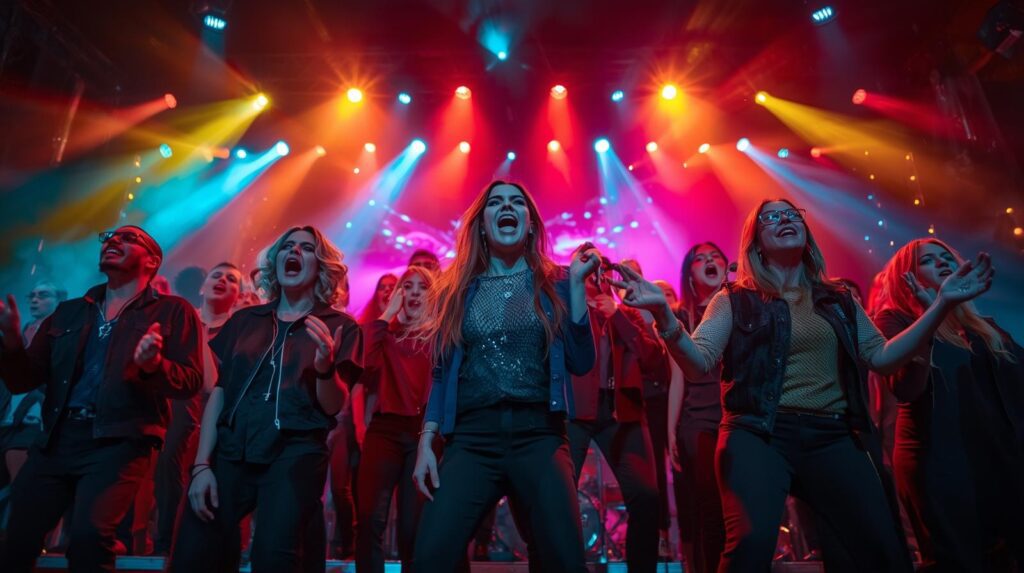
Harmony is one of the defining elements that makes choral interpretations of popular songs so powerful. Yet blending these harmonies requires precision, listening, and stylistic awareness. Popular choral music often includes close harmonies, suspended chords, and jazz-influenced progressions that demand careful tuning. Singers must match vowel shapes, tone color, and resonance placement to achieve a unified sound across the ensemble. Straight tone is especially important, as excess vibrato can interfere with the clarity of tight harmonies commonly found in pop arrangements. Directors should encourage section leaders to listen horizontally across the ensemble rather than only to their own section, cultivating a group awareness that strengthens tuning and balance. Exercises like layering sections one-by-one, holding chords to refine tonal alignment, and isolating difficult harmonic passages improve both precision and blend. When executed well, the harmony work in performing popular choral music elevates the performance from pleasant to truly moving.
A. Understanding Pop Harmony
Expect:
Close harmonies
Jazz-inspired chords
Major 7ths & 9ths
Parallel lines
B. Blending Strategies
Focus on:
Unified vowels
Matched tone color
Balanced breath flow
C. Controlled Vibrato
In pop choral music:
✔ Straight tone is essential
✔ Vibrato only in emotional lines or solos
D. Active Ensemble Listening
Techniques:
Layering sections
Call-and-repeat
Recording and reflecting
4. Strengthening Rhythm & Timing for Performing Popular Choral Music

Rhythm is the backbone of popular choral music, and without strong rhythmic precision, even the best vocal technique cannot save a performance. Pop arrangements rely heavily on syncopation, offbeat entries, rhythmic layering, and drum-like vocal patterns that require singers to internalize a steady pulse. Choirs must practice counting subdivisions such as “1-e-and-a” and “1-and-2-and” to master complex rhythmic structures. Incorporating clapping exercises, body percussion, and metronome training builds rhythmic discipline. When performing with percussionists, beatboxers, or backing tracks, singers must learn how their vocal lines fit into the greater rhythmic landscape. Directors can also rehearse rhythm sections separately before integrating them into full ensemble work. The more comfortable singers become with groove and timing, the more confident and energetic their performance will be. Strong rhythm transforms the choir into a cohesive, vibrant ensemble capable of delivering the lively feel that defines modern popular music.
Pop = precision + groove.
A. Why Rhythm is Critical in Pop Choirs ?
Because the backbeat and syncopation drive the entire arrangement.
B. Essential Rhythm Drills
Practice:
Sectional rhythm clapping
Metronome drills
Beat subdivision
C. Subdivision Mastery
Teach:
1 e & a
1 & 2 & 3 &
This prevents late entrances.
D. Working with Percussion / Beatboxing
Add:
Cajón
Drum kit
Beatboxer
Early in rehearsals—not last minute.
5. Developing Soloists for Performing Popular Choral Music

Soloists play a crucial role in many popular choral arrangements, bringing individuality, emotion, and stylistic authenticity to the performance. To choose the right soloist, directors must consider not only vocal ability but also emotional connection, confidence, tone color, and stylistic match. Once selected, soloists need specialized coaching in microphone technique, phrasing, breath support, and contemporary vocal styling such as riffs, slides, and straight-tone lines. Soloists should be encouraged to listen to the original song for inspiration while adapting it to a choral setting. Meanwhile, the ensemble must learn to adjust their volume, tone, and dynamics to support the soloist without overpowering them. This balance ensures the solo voice shines while the choir creates a beautiful, unified backdrop. A well-prepared soloist elevates the emotional impact of performing popular choral music live.
A. Choosing the Right Soloist
Consider:
Tone
Style
Confidence
Emotional connection
B. Soloist Technique
Focus on:
Microphone control
Smooth transitions
Stylistic accuracy
C. Balancing Soloists & Choir
The choir must support—not overpower—the soloist.
D. Building Emotional Expression
Teach soloists:
To tell the story
Use expressive dynamics
Maintain audience connection
6. Diction & Lyric Clarity for Performing Popular Choral Music Live

In popular music, lyrics play a central role in audience connection. Clear diction ensures that listeners understand the story, emotion, and message behind every word. Unlike classical singing, where vowels dominate, performing popular choral music requires crisper consonants, natural speech-like articulation, and rhythmic text delivery. Choirs should rehearse speaking the lyrics in tempo, breaking words into rhythmic syllables to coordinate entrances and phrasing. Shadow speaking—moving the mouth silently through the lyrics—can help singers internalize clarity and expression. Pop music often uses conversational text, so singers should avoid overly formal vowel modifications unless needed for blend. When choirs master diction, they bring authenticity and emotional impact to their performance.
A. Why Diction Matters More in Pop
Audiences must understand the lyrics instantly.
B. Diction Techniques
Use:
Exaggerated consonant drills
Shadow speaking
Rhythmic word breakdowns
C. Conversational Phrasing
Keep it natural and speech-like.
7. Dynamics & Emotional Expression in Popular Choral Performance

Dynamic contrast is one of the most powerful tools in performing popular choral music live. Popular choral arrangements often shift between intimate, soft phrases and bold, full-ensemble climaxes. To achieve this expressive range, choirs must practice controlled crescendos, sudden dynamic drops, and layered dynamics where certain sections sing more prominently than others. Emotional expression is equally important. Directors should encourage singers to explore the meaning of the lyrics, understand the character or perspective behind each phrase, and express emotion through tone, facial expression, and body language. Pop music is deeply emotional, and audiences can feel the difference when singers genuinely connect with the story. Strong dynamics and heartfelt expression create performances that resonate long after the final note.
A. Dynamic Control
Use:
Layered dynamics
Sudden drops
Climactic buildups
B. Emotional Interpretation
Discuss:
Song meaning
Emotional arc
Storytelling moments
8. Unified Breathing When Performing Popular Choral Music Live
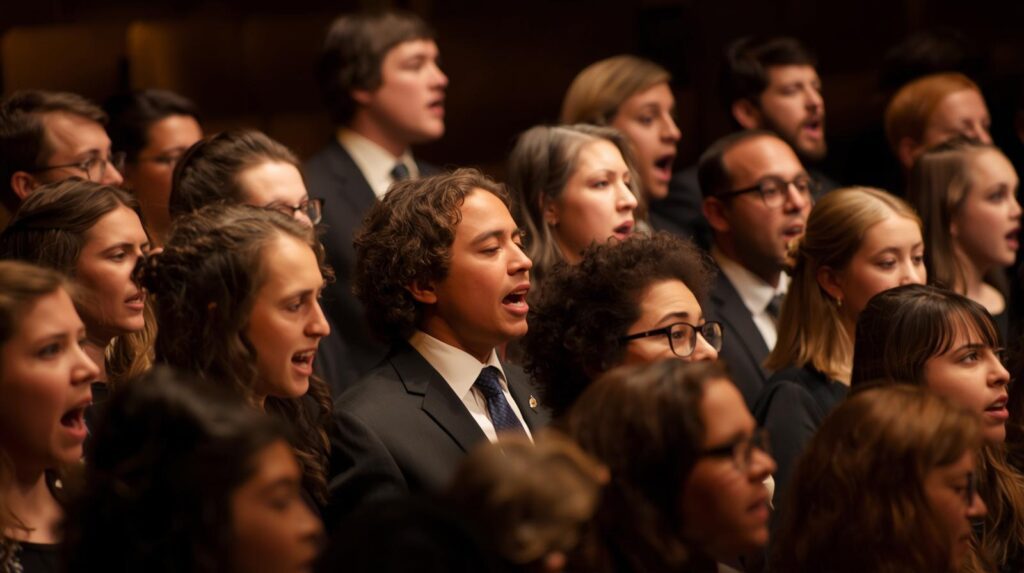
Breathing together is essential for achieving a unified choral sound, especially when performing popular music with its smooth phrasing and syncopated patterns. Choirs should practice taking clear, cued breaths to ensure that entrances feel coordinated and confident. Silent breathing techniques help reduce distracting noise during soft or emotional sections. Directors should also mark breath points in the score to maintain consistency across the ensemble. Group breathing exercises not only improve sound quality but also create a sense of connection among singers. When breath is unified, tone becomes more stable, phrasing is more controlled, and the overall performance feels more polished and professional.
A. Group Breathing Techniques
Practice cued breaths.
B. Silent Breaths
Reduce unwanted noise onstage.
C. Breath Planning
Mark breath points in the score.
9. Stage Presence & Movement for Performing Popular Choral Music

Popular music performance requires more than just excellent singing—it demands engaging stage presence. Unlike traditional choral music, where choirs may stand still, performing popular choral music live encourages movement, energy, and visual connection with the audience. Simple choreography such as swaying, step-touches, hand gestures, and dynamic positioning can enhance the musical effect and make the performance more captivating. Choir members must maintain confident expressions, relaxed posture, and awareness of their spacing. At the same time, movements should never feel forced or distracting. Directors should coach singers to project confidence, enjoy the music, and engage with the audience while maintaining vocal stability. Effective stage presence transforms the performance into an immersive experience.
A. Confident Stage Behavior
Focus on open expressions and relaxed posture.
B. Simple, Clean Choreography
Examples:
Swaying
Step-touches
Hand gestures
C. Avoid Common Mistakes
Avoid stiff bodies or looking down.
10. Microphone & Sound Check Tips for Performing Popular Choral Music
Sound checks are crucial when performing popular choral music live, especially when microphones, speakers, or backing tracks are involved. Ensemble microphones require consistent spacing and balanced vocal projection to capture the entire group evenly. Soloists must learn how to hold and angle a microphone to prevent popping and achieve clean sound. During sound checks, choirs must test dynamics, blend, and transitions so the audio engineer can adjust levels accordingly. Monitoring is equally important—singers need to hear both themselves and the backing track to stay in sync. Proper sound check preparation ensures that the technical side of the performance supports the musical artistry.
A. Ensemble Mic Technique
Keep spacing even.
B. Soloist Mic Technique
Adjust distance for soft vs. loud parts.
C. Monitor Balance
Ensure the choir hears themselves and the backing track.
11. Performance Simulation Rehearsals
Simulating performance conditions helps singers feel prepared and reduces stage anxiety. Full run-through rehearsals allow the choir to practice stamina, transitions, and ensemble coordination. Adding lighting, microphones, and movement helps singers adapt to real performance conditions. Dress rehearsals give them an opportunity to test how outfits affect posture, breathing, and movement. Directors can also invite a small audience during rehearsals to mimic the pressure of performing live. These simulations create familiarity and confidence, ensuring that the final performance feels natural and controlled.
A. Full Run-Throughs
Sing without stopping.
B. Lighting Practice
Helps singers adjust to brightness and heat.
C. Dress Rehearsal
Test outfits + movement.
D. Mini Audience Trials
Reduces stage fear.
12. Mental & Emotional Preparation for Live Pop Choral Performances
Performing live can be emotionally demanding, especially for younger singers or new soloists. Directors should incorporate mental preparation techniques such as deep breathing, visualization, grounding exercises, and positive affirmations. Choir rituals—like group circles, motivational talks, and team chants—help build unity and reduce nerves. Individual singers can also rehearse mentally by imagining the performance going smoothly and confidently. Strong mental preparation strengthens focus, reduces anxiety, and enhances stage presence.
A. Anxiety Management
Use deep breathing and grounding techniques.
B. Choir Rituals
Circle warm-ups
Group chant
Motivational pep talk
C. Individual Mindset
Visualize success.
13. Recording & Reviewing Rehearsals
Recordings serve as powerful learning tools when performing popular choral music. Listening back allows singers to evaluate pitch accuracy, blend quality, rhythmic precision, diction, and emotional delivery. Directors can highlight improvements and identify areas that need more attention. Comparing early rehearsal recordings with later ones provides visible proof of progress, boosting morale and motivation. Reflection is key to refining the performance and reaching a professional level.
A. What to Listen For
Pitch, blend, timing, energy.
B. How to Improve Using Recordings
Encourage reflective listening.
14. Building Teamwork & Choir Chemistry
Great choral performances come from ensembles that trust, support, and connect with one another. Team-building activities help singers bond, communicate openly, and feel comfortable taking artistic risks. Encouraging respect—no interrupting, no judgment, and supportive feedback—creates a safe rehearsal environment. When singers feel valued and understood, they perform with greater confidence and emotional expression. Strong choir chemistry enhances blend, timing, and overall performance quality.
A. Bonding
Section activities and games.
B. Respect & Support
Applaud efforts.
Avoid criticism tone.
C. Safe Space for Growth
Let singers make mistakes.
15. Final Performance Day Tips for Performing Popular Choral Music
On performance day, choirs should focus on calmness, readiness, and unity. A structured warm-up routine helps prepare the voice without causing fatigue. Singers should hydrate well and avoid foods or drinks that irritate the throat. During the performance, they must maintain strong posture, attentive focus, and energetic expression. After the show, cooling down vocally protects the voice, and celebrating achievements reinforces positive performance habits. Reflecting on feedback prepares the ensemble for future performances and continued growth.
A. Before Performance
Warm up
Hydrate
Avoid irritants
B. During Performance
Watch the conductor
Stay energized
Support the soloist
C. After Performance
Cool down
Celebrate
Reflect for next time
Performing popular choral music live is far more than a musical task—it is a complete artistic experience that blends technique, teamwork, individuality, and emotional storytelling. What makes popular choral music special is the way it transforms familiar songs into powerful ensemble performances that resonate deeply with audiences. Whether the choir is singing a soft pop ballad, an upbeat chart hit, or an inspiring musical-theatre number, the goal is always the same: to create a moment that feels authentic, energetic, and emotionally alive.
Intersted in learning music with us? Register now
For more information and exciting resources about learning music, visit our website at The Mystic Keys. For more music content and exciting offers follow us on
Facebook, Instagram, YouTube, LinkedIn, Twitter, Pinterest, and Threads.


